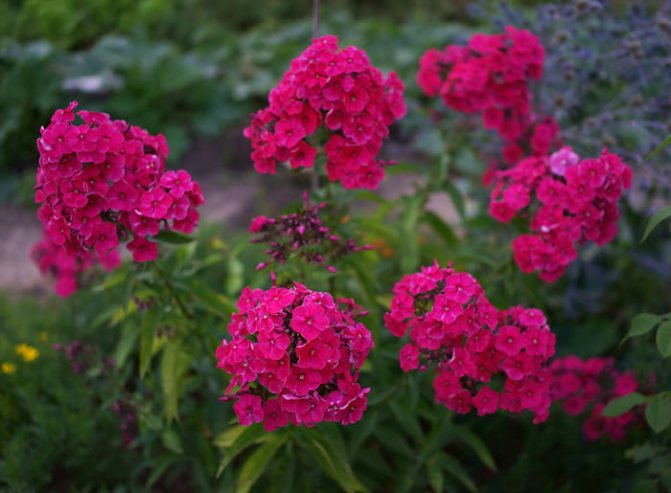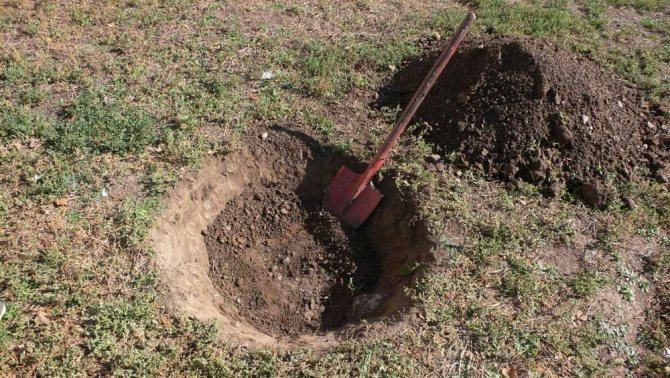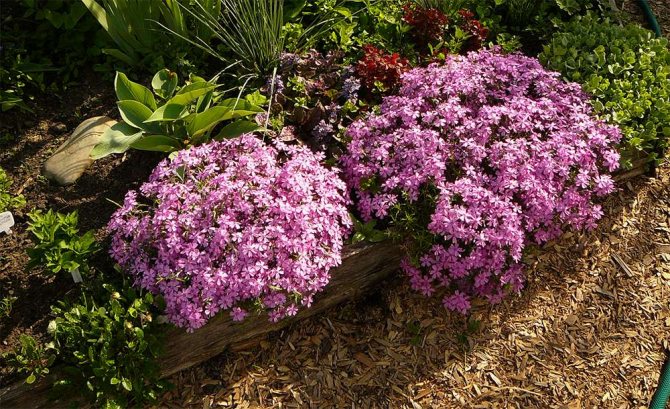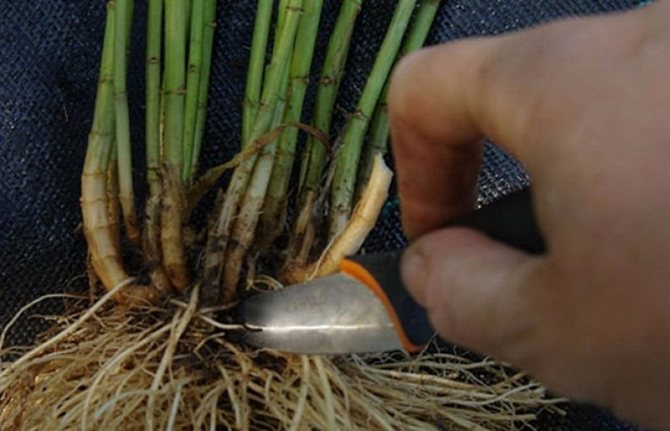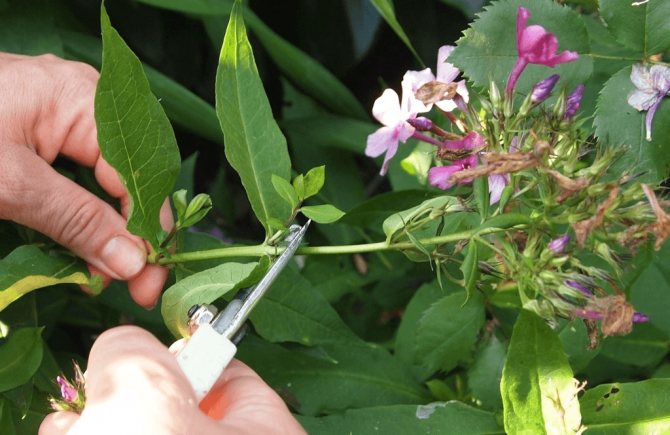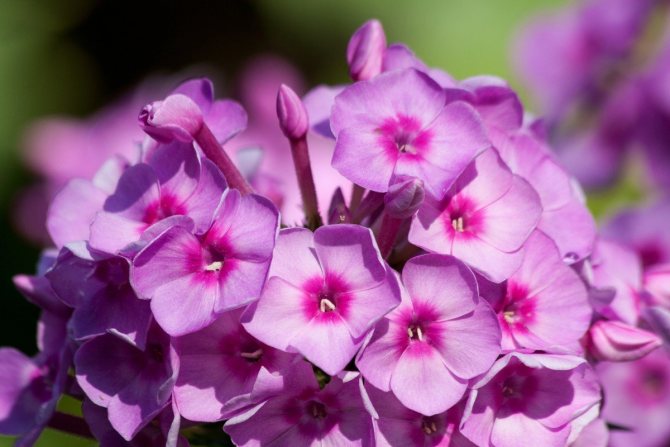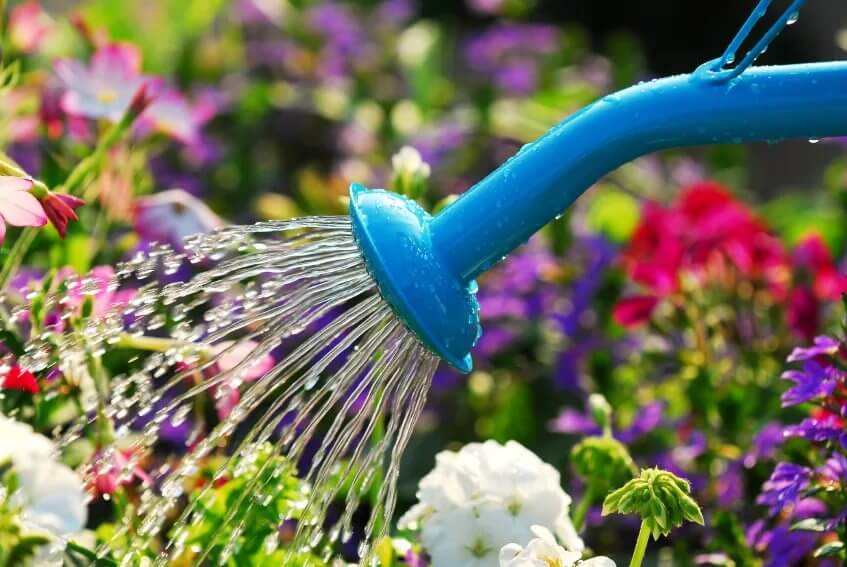Phlox are flowers that many gardeners grow. They are unpretentious, bloom for a long time and take up little space. But sometimes, for various reasons, they need to be transplanted.
How and when can and should you transplant phlox? What time of year is it better to transplant? How to properly care for the plant after this procedure, and what are the most common mistakes inexperienced growers make? Answers to these and many other questions are presented in this article.
Phlox bloom is incomparable
Place for phlox
In the wild, phloxes grow on organic-rich and well-hydrated soils: forest edges, floodplain meadows. Varietal plants do not differ in soil selectivity. For them, in a garden or flower garden, places with fertile loose soil are prepared, mixing peat and sand into it. To reduce the time for watering, and phloxes need to be watered often, places with close groundwater are chosen for flower beds. Phlox is also planted in a shaded place.
Advice! When choosing a shaded part of the site for planting phlox, you do not need to stop choosing places under fruit trees or next to shrubs. Flowers don't like this neighborhood.
How to care for a transplanted plant
Taking care of transplanted specimens is quite simple. The rules for growing a crop are determined by its natural place of growth. In nature, the plant grows in the light partial shade of spreading forests, near rivers and lakes. Areas with moist and nutritious soil. For successful cultivation and abundant flowering, the conditions should be created as close as possible.

When caring for a young plant, it is important to know that the phlox root system quickly takes moisture from the soil and the whole bush suffers from this. Prevention of overdrying of the earth is mulching its surface. Use dry leaves, peat. Moreover, mulch is an excellent source of nutrition. The plant independently absorbs useful components even in winter.
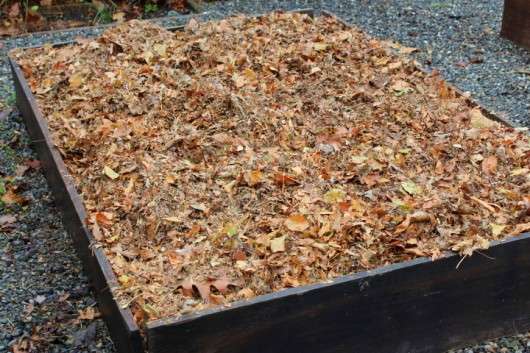

Important! If dry fallen leaves are used as mulch, they are removed immediately after the snow melts.
Phloxes impress with their colors. It is not surprising that they are used in combination with other plants or make up designs by combining different varieties. Many beginners are interested in whether phloxes can be pollinated in group cultivation, professionals answer - no, they cannot. Each bush is considered an individual plant with special characteristics. But improper care leads to the fact that the varietal plant is reborn into a pink wild. This is why adherence to content rules is very important to culture.


Phlox can be grown as tapeworm plants or in combination with other plants. With the help of phlox, landscape designs of amazing beauty are created. Planting phloxes in the garden means admiring the abundant flowering throughout the warm period.
Autumn transplant
The period when phloxes can be transplanted lasts from the last decade of August to the first days of September. This period allows the transplanted phlox to be given time to adapt to frost.
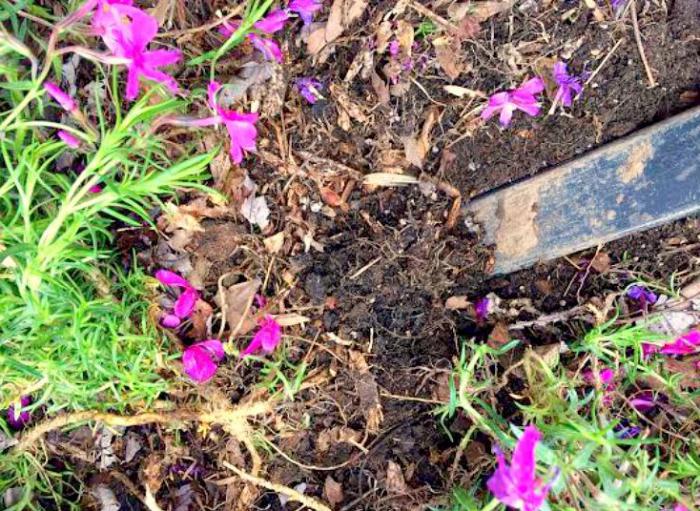

Phlox transplant
Preliminary preparation
When to transplant hydrangea from one place to another
A new place for a flower begins to be prepared 2 weeks before planting.The soil is dug up, weeds and other debris are removed, and top dressing is applied. In autumn they feed:
- compost;
- a mixture of humus and wood ash;
- mineral fertilizers with a high content of potassium and phosphorus.
On a note! A few days before planting, the land of the new flower garden and the phlox bushes that will be transplanted are watered abundantly.
Landing
When transplanting phlox, the following stages can be distinguished:
- Wells.
They are placed at a distance of about 50 cm from each other (for bushes of tall varieties, the distance is increased to 60 cm), so that there is enough space for growing bushes. The depth of the planting cut is up to 30 cm (25 cm is set aside for a spacious arrangement of the roots, and 5 cm is added to reduce the risk of freezing of the root system during the winter cold).
- Bush preparation.
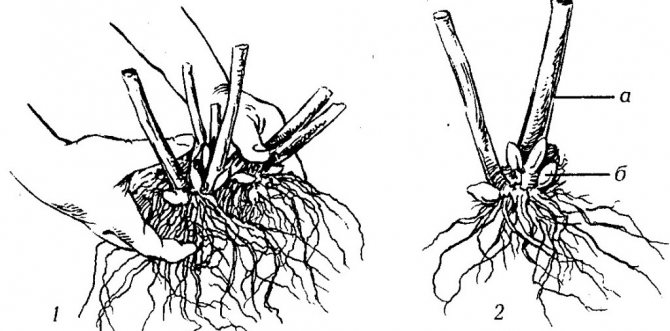

Preparing a bush for transplanting
The plant is carefully dug out so as not to damage the root. The largest bushes are divided, taken one by one, if they want to propagate the plant during transplantation, and the shoots are cut off on them, leaving only a part of the stem with several leaves.
Roots longer than 20 cm are shortened.
On a note! When transplanting without reproduction, the strongest flower is chosen and all manipulations are performed only with it.
- Disembarkation.
Before planting phlox, 1-2 liters of water are poured into the planting recess. Then the bush is placed in the center of the hole so that the neck is covered with earth at a distance of 5 cm from the surface. Sprinkle the plant, compact the earth so that there are no voids. The root system is abundantly watered, the earth is poured under the bush and mulched.
Interesting! The advantage of autumn planting is due to the peculiarity of the plant to develop without waiting for the snow cover to melt and the ground warms up. Phlox transplanted in autumn will grow in early spring and prepare for flowering. This time is also attractive because the bush dug out and processed for planting cannot be accidentally damaged.
Choosing and preparing a place for a transplant


The choice of a place for the cultivation of flowering bushes is an important point in plant agricultural technology. As practice shows, phlox develop well and bloom both in the sun and in shallow shade.
Important! When growing phlox in the shade, it is impossible to wait for abundant and bright flowering. That is why it is recommended to plant the plant in open areas. The exceptions are varieties with dark colors and those that fade easily in direct sunlight.
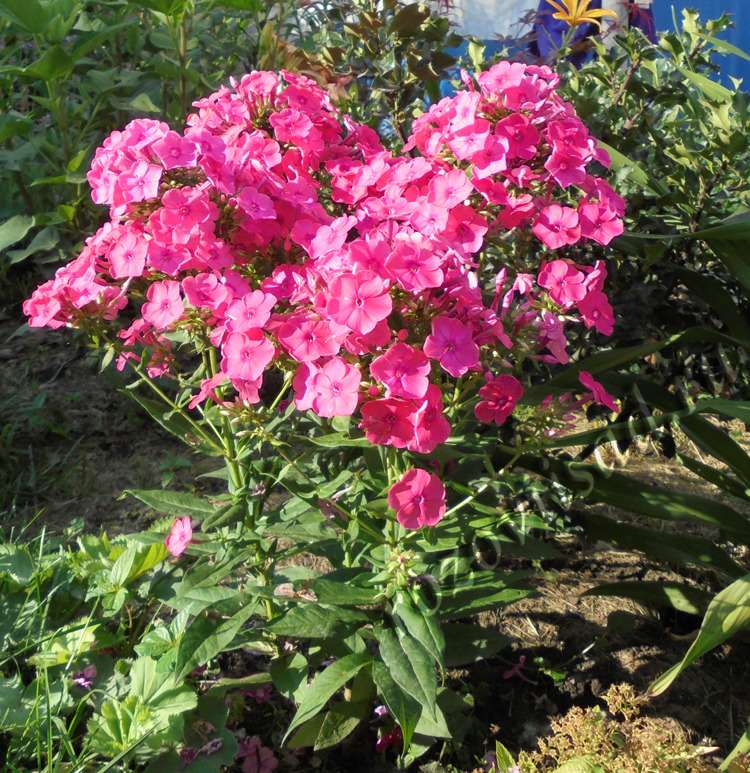

The selected location should be on a hill. Areas that are flooded with melted snow or rainwater are not suitable. The situation in low-lying areas can be corrected by laying shallow drainage grooves along the plantations.
After the location is selected, you can start preparing the soil. Ideal is neutral nutrient soil.


The soil is prepared in advance by mixing the garden soil with a large amount of compost (20 kg of rotted manure per 1 sq. M). Also, the gardener should add river sand, wood ash, peat.
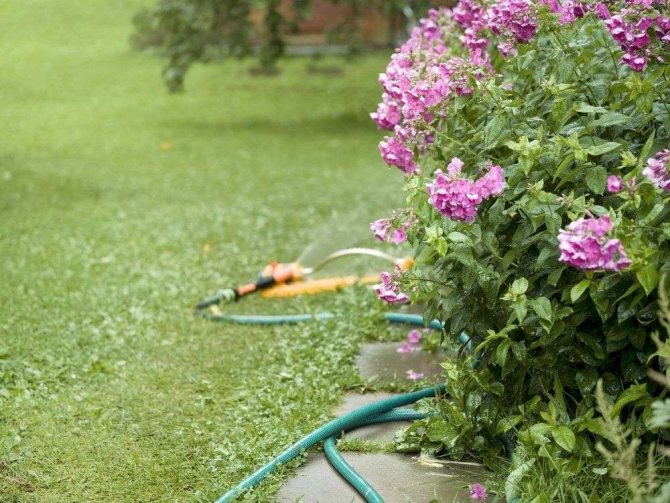

The prepared flower bed is watered abundantly with water and left for 2 weeks for “aging” and resorption of nutrients.
Phlox transplant in spring
When to transplant astilbe
During the spring transplant, there is a high probability of harming the dug out plant. After winter, it begins to develop even before the snow melts; by the time of transplantation, there are tender young shoots of the root system on it, which are easily injured. Nevertheless, spring is the most popular time for transplanting among residents of central Russia. As many years of experience show, the most suitable time for the spring transplantation of phlox is the end of April-beginning of May.
Important! With a spring transplant, phlox bloom 2 weeks later than usual.
The technology of spring transplanting flowers does not differ from the autumn one.Unless only by the fact that the soil at the planting site can be fertilized with nitrogen-containing fertilizers - they stimulate growth.
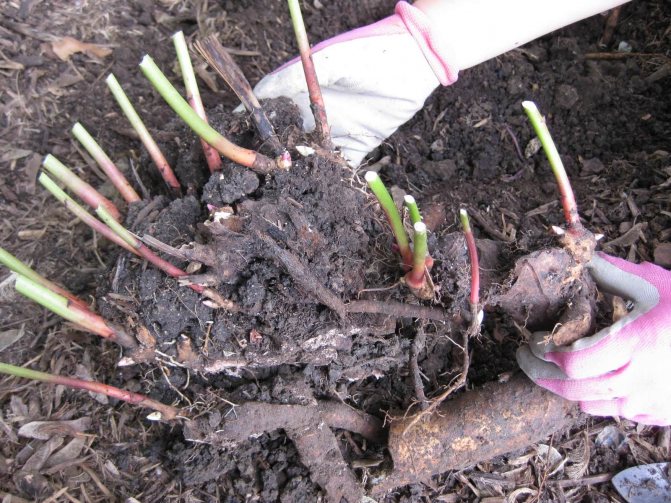

Phlox transplant in spring
When to transplant?
Autumn is considered the best period for changing the zone of planting bushes, at which time the growth of plants practically stops.
This is due to the beginning of the early growth of the roots of this culture - after snowmelt. Therefore, spring transplantation is fraught with damage to the root system and a decrease in the number of flowering bushes. In the spring, it is quite difficult to catch the right moment when the soil has thawed, and root growth has not begun.
It should be noted that in the zone of temperate continental climate, it is recommended to transplant in the spring due to the risk of death of the plant from frost during winters with little snow due to poorly rooted bushes. In addition, at this time the stems have not yet grown and they will break when transplanted.
You can also change the place of planting phlox in summer, when the plant blooms. Work must be done with extreme care so that as much soil as possible remains on the roots. It is undesirable to separate the bushes in the summer.
In the spring
The spring transplant can be started from April to the first half of May.
The reference point will be the plants themselves, the moment of regrowth of shoots up to 10 cm long is the optimal period for transplantation.
The spring rise in temperature contributes to the rapid growth of phlox, during transplantation, the stems are often damaged, as a result of which flowering is delayed up to 2 weeks and its duration is reduced.
To compensate for the losses during transplanting all the broken off shoots, the rhizomes can be planted in the soil, covered with a film or agrofibre and periodically well moistened. The result will not be long in coming, all transplanted sprouts will quickly take root.
In autumn
When transplanting an adult plant, you can divide the bush into several parts.
A transplant in autumn is performed starting from the third decade of August, after the formation of shoots from the buds of renewal, until the first days of October.
Until the temperature is below zero, the plant needs to take root well, so it is recommended to mulch in order to maintain warmth in the root zone as long as possible. It is desirable that the leaves remain on the stems, this contributes to the rapid adaptation of the plant to a new place.
Autumn transplant times are 30-40 days, and spring ones - 12-14.
Summer transfer
The end of spring and summer is the time of flowering and it is especially important for flower growers to know how to transplant phloxes in the summer without harming the plant, and not interfering with the development of inflorescences. The reason to interfere with the development of a plant during budding and flowering can be different, but always weighty:
- the need to rejuvenate a perennial flower, so that the bush after transplantation becomes more luxurious, and the flowers are larger;
- depletion of the soil, when regular feeding fails to compensate for the deficiency of nutrients;
- reproduction in the soil of pathogens and insects parasitizing on the flower;
- the threat of flower infections that can cause the death of the plant;
- banal redevelopment of the territory. It may be associated with a change in the location of the flower garden due to construction, the transfer of the recreation area to a new place.
When to transplant to host
Phlox can be transplanted in any summer month, be it August, July or early summer. To perform work, it is advisable to choose a cloudy day, morning or evening, when there is no hot sun.
Important! Transplanting phlox to another place in the summer has a peculiarity - the dug out bush does not need to be freed from the ground. You need to plant the plant with an earthen clod. It is not recommended to divide the bush.
Follow-up care after transplant
Care must be taken to ensure that the soil is free of weeds and that the soil is always loose. Watering plants is constantly needed. This is especially important on hot days.
The soil also needs mulching.This can be done using a mixture of humus, peat and manure. It is useful to periodically feed the land with liquid fertilizers.
If suddenly some shoots have wilted, they must be removed immediately so that the plant does not waste resources on their preservation. If necessary, the shoots are pinched.
Separately, it is worth talking about the winter period. Plants are not very afraid of the cold, but still they may not survive the winter. Therefore, you need to make sure that during the winter they are in the most comfortable conditions for them.


Shelter for the winter
The first step is to prune the shoots to 10-15 cm. This is done so that harmful insects cannot overwinter on the shoots.
Next, the soil around the phlox is processed. Processing is done so that the plant does not become infected with various infections.
After 10-14 days, the soil is mulched and only then the shelter is made. It is made from peat, spruce branches, foliage, etc. The film is stretched from above and pressed along the edges with stones or something heavy.
The film keeps the plants warm and dry throughout the winter. On warm days, the plants must be freed immediately, otherwise they will rot under cover and die.
Caring for planted flowers
If you follow the recommendations of gardeners and adhere to the norms of agricultural technology, flowers will only delight. For a new phlox bush to take root easily, you need:
- timely remove weeds from the site and near the bush;
- the plant is sensitive to lack of moisture. It needs to be watered regularly, but the soil should not be waterlogged. With frequent rains, reduce the amount of watering, in dry times - increase.
- loosen the soil to prevent crust formation;
- mulch the soil, use for this straw manure, humus, peat, mixed in equal shares;


Phlox mulching
- regularly make top dressing, preferably easily digestible liquid;
- cut off dried shoots and flowers immediately, unlike lily flowers (a dried lily is not removed from the bush immediately, but only when seed bolls appear).
Reproduction of phlox seeds. How phlox reproduce
Most of the plants of these species are perennials. Only Drummond, an annual, can reproduce only with seeds.
Phlox breeding methods:
- Vegetative method: by dividing the bush, layering and cuttings.
- Growing from seeds: seedlings and directly into the ground.
Vegetative way
Since the flowers need to be updated just every 5 years, for this purpose the bush is divided. It can serve as a material for seating phlox. They dig out the bush, shake off a clod of earth. If the roots have grown tightly and intertwined, you can lightly rinse with water. Separate the stem and root carefully. We remove the old roots, then slightly prune the remaining ones. The seedling is ready for planting.
Another most common method is grafting.
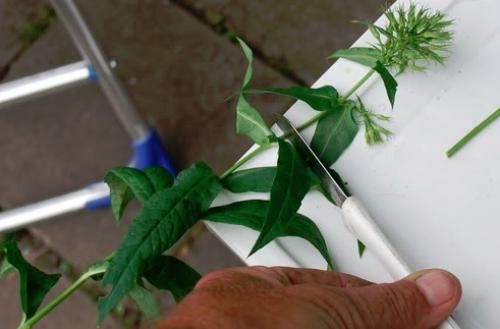

There are several ways to root cuttings.
Young spring shoots (up to 12 cm) are separated from the main bush and planted in a greenhouse. When the ground warms up, you can plant it in a permanent place.
Second way. The stems are cut with two pairs of leaves in early summer. So that from the bottom to the leaves there is a piece of the stem. For a day, put in a nutrient mixture (for example, "Kornevin"). A stalk is planted in a specially prepared greenhouse and covered with a bottle or jar until the roots are tied and the first leaves appear. In early autumn, you can transplant a seedling to a permanent place. The optimal time is late August, early September. This is done so that the seedling has time to take root in a permanent place before the cold weather.
Note. It is possible to plant a plant in summer, but in this case it is necessary to maintain a moist regime, regularly, but not abundantly watering.
Growing from seeds
Experienced gardeners recommend growing phlox from seeds.They argue this opinion by the fact that a self-formed plant is stronger, adapts better and does not inherit the diseases of the mother bush.
Important. Attention should be paid to the fact that seeds lose germination during long and improper storage. Therefore, they must first be checked for germination, using the stratification method. Simply put, germinate.


Seeds of phlox subulate.
How to germinate seeds?
Sowing seeds for germination can be done using standard methods. Sow them in wet sand and make sure they hatch. Then plant on seedlings or in warm open ground, at the end of May.
Another recommendation: planting seeds for seedlings directly into prepared boxes to a depth of 2 cm. Water the seedlings with a sprayer so as not to wash them. After 2, 3 weeks, seedlings are dived and the first feeding is done (with nitrogenous fertilizers).
How to sow seeds?
Note the "Perennial Blend" of phlox seeds from. Plasma treatment stimulates plant growth and development. The flower blooms ahead of time.
Sprouted seeds can be planted in warm soil in May, directly into the ground (up to 2 cm deep). At first, until sprouts appear, they are covered with a film. Then it is removed. Flowering will begin during the planting season, but later.
There is a way to plant seeds in the winter. This is where opinions differ. Some argue that early sprouts can die prematurely from the cold. Others, on the contrary, say that such a planting hardens the plants.
Our advice. In the case when you have your own seed material from mother bushes that have adapted to the climate, you can plant it in the winter. If these are purchased seeds that have not previously grown in your phlox varieties, then it is better to germinate them and plant them on seedlings. Plants have memory, so they respond to different growing climates.
Tips from experienced florists
Novice growers make mistakes when planting phlox:
- late in the spring, they remove the shelter made for protection from the winter cold. Phloxes "wake up" after winter, when there is still snow, and because of the shelter, the development of the plant slows down. Even under the shelter, a microclimate that is not useful for a flower is created with high humidity;
- planting bushes too close to each other. Because of this, plants are poorly ventilated, which contributes to the development of pathogens. Plants still planted close to each other experience a lack of nutrients;
- non-observance of the spring terms of transplantation. Because of this, the plants do not have enough time to adapt and they do not bloom this year.
Phloxes are beautiful and unpretentious perennials. But this does not mean that they do not need to be looked after. They need to be watered, fed, planted regularly. Phlox is transplanted every 4-6 years in any of the seasons.
Common mistakes
Phloxes belong to plants that are resistant to diseases, pests, they are unpretentious in cultivation. Despite this, novice florists make a number of mistakes that lead to problems:
- High humidity serves as a favorable environment for the spread of slugs, which can be destroyed with lime or wood ash.
- A strong shade or waterloggedness leads to a lack of flowering, decay of rhizomes and the death of the bush.
- An excess of fertilizers contributes to an excessive build-up of green mass and the rejection of flowering.
- Phlox will also not bloom if the root cutting is planted deeply.
- A delay in transplanting to a permanent place leads to a cessation of development, oppression of the plant.
- If the planting material is taken from a diseased plant, there is a high probability of infecting all the flowers in your garden.
Subject to the rules of propagation by cuttings, further planting and care, phloxes grow healthy and delight with beautiful inflorescences.
Reproduction
Phlox reproduce by layering, cuttings, seeds, dividing the bush.
The easiest way is to divide the bush.After all, phlox transplantation is still done every 5-6 years, because the bushes grow, and the flowering weakens. Therefore, it is easy to combine the two procedures.
As soon as a phlox transplant is needed, its timing must be combined with the time of dividing the bush. However, they already coincide. The division of the bush is also carried out either in the spring (in May), or in the fall (August - September).
Phlox has faded, what to do. When to cut phlox for the winter - timing
When to prune phlox for the winter depends on the climate and the type of flower. These perennials are divided into two varieties - tall, up to 180 cm, and creeping, no more than 25 cm.For example, the latter includes subulate phlox, the height of this ground cover plant is 10-15 cm.


phlox trimming - pictured
All phloxes require pruning after flowering, and it must be done on time - neither late nor early. While the foliage turns green, the roots receive nutrients - reserves for the next season. The more luxuriant the aerial part, the more nutrition will go to the roots.
If you remove the green parts too early, they will begin to grow again in warm weather, depriving the perennial of reserves and weakening it, therefore, phlox pruning for the winter is carried out only at the end of the growing season, with the onset of stable cold weather. But you cannot tighten it until frost, otherwise the plants may die, the freezing of the soil is especially dangerous if the snow cover has not yet fallen on it.
If you don't know exactly when to prune phlox for the winter, pay attention to the flowering time, so early phlox varieties bloom in August and at the end of the month start pruning or transfer it to early September.
Late phloxes finish flowering by the end of September, in this case, pruning of phloxes is performed from early to mid-October, especially in the harsh climate of the Urals, Siberia, the Leningrad region, and in the middle lane, and in particular in the Moscow region, pruning continues until the end of October. if the weather permits.
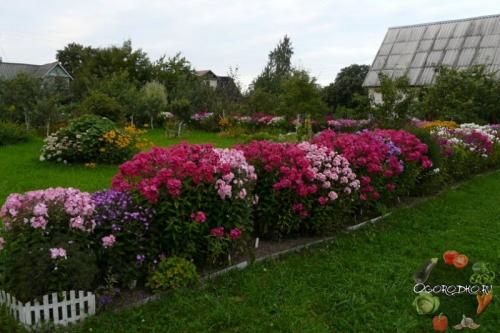

phlox, riot of color - pictured
Some experts recommend that in areas where there is very little snow, pruning is not carried out in autumn, but at the very beginning of spring, when the pests have not yet woken up and the plants are also at rest. The stem removal procedure will not be stressful for him. And in winter, it is convenient to navigate by dry stems and throw snow towards them, helping to winter.
With a thick and long-lasting snow cover, excessive moisture quickly leads to the development of fungus and other diseases; in such an area, it is better to completely remove the stems in the fall. It is believed that at the base of the stems, at a level of 2-4 cm, with radical pruning, renewal buds can be damaged, from which fresh shoots will grow in spring. But, during the process of rotting, the kidneys will die with an even greater probability. Experts believe that these buds develop weaker shoots than those that hibernated underground. It makes sense to leave them if you need a lot of planting material for cuttings.
What to do with phlox in the fall. Pruning phlox in the fall
Removing stems is a very important step in the autumn care of most of the plants in the garden, including flowers. Is it advisable to prune phlox in the fall, and how to do it so as not to harm them?


Why prune phlox
Phlox are pruned, as a rule, in pursuit of the following goals:
- Removing the aerial part of flowers is an excellent prevention of fungal diseases.
- Together with the stems, the pests accumulated on the brilliant green are destroyed.
- A layer of mulch will prevent the roots from freezing, which grow upward and often become bare.
- Cultivated plantings are less problematic to spray and mulch than plantings with a solid top.
- After flowering, all nutrients pass into the root and remain there, which allows the plant to winter safely.
- Trimming the stems prevents the formation of weak stems.
When is the best time to prune phlox - in autumn or spring
According to the opinion of experienced florists, phlox stems should be cut off in the fall before the onset of cold weather. Correctly performed garden manipulation will prevent the development of diseases and the attack of insects, and also make the plant healthier.


If the bushes grow in the northern or southern part of the country, it is recommended to cut the stems in early spring: the ground part will trap snow, which will warm the roots and fill them with moisture.
Timing of pruning phlox in the fall
The best time to cut elegant flowers is chosen based on the varieties grown: early bushes are cut in September, late ones - in October. Please note that manipulation should be started only after the bush has completely bloomed, and the nutrients from the green part will go down to the roots. You need to finish the autumn pruning before the establishment of permanent frosts.
How to properly cut phloxes in the fall - instructions and diagram
There are several schemes for pruning phlox:
- The ground part of the plant is cut off at a height of 1-2 cm from the ground. After the complete removal of the stems, the risk of contracting diseases disappears, the pathogens of which have gathered on the ground part during the season. For the same reason, the plant is less susceptible to insect attack.
- The stems are cut, leaving 8-10 cm of hemp. As a result of using this method, young shoots develop from the remaining buds in the spring. However, in practice, they often develop poorly and bloom much worse than those that grow from the root.
- After pruning, hemp is left with a height of 10-20 cm. Despite the fact that this scheme is most popular among gardeners, it has several disadvantages: insects and pathogens remain on the remaining ground part, the plant is rather difficult to spray and mulch.
According to the latter scheme, it is best to cut off phlox growing in the north and south: hemp well hold snow over the roots and protect them from the cold, fill them with moisture.
Based on the above characteristics, the use of the first and third schemes is most justified.
Care after pruning phlox in the fall, feeding them
In order for the autumn pruning to be useful for phloxes, you need to properly care for after manipulation. The sequence of actions should be as follows:
- On the site, organic waste is raked up and burned away from cultural plantings.
- To prevent the development of diseases, the soil around the plants is sprayed with fungicides.
- Before feeding, the plant is watered abundantly.
- 1 tbsp is applied under a flower bush. l. superphosphate mixed with a small amount of ash.
Main groups
The earliest flowering ones belong to ground cover phlox. For example, subulate phlox begins to bloom in May. It is called so because of the leaves, which have an awl-shaped shape. This group also includes Douglas phlox, adorable, Rugelli.


The next group is friable phlox. Their flowering begins a little later than that of groundcover, but also early. These include, for example, splayed phlox. It blooms very luxuriantly, has a violet smell and, depending on the variety, different colors of flowers: white, purple, lilac.
The third group is bush phlox, they are tall and short. The first of them are the most popular with us. Phlox paniculata, for example, can be of various colors, and its flowers are collected in lush inflorescences. White phloxes of this variety are especially beautiful.
Spotted phlox also belongs to tall ones. It is sometimes confused with paniculata. However, its inflorescences resemble the shape of a cylinder, the stems are covered with purple specks, and it blooms much earlier.



